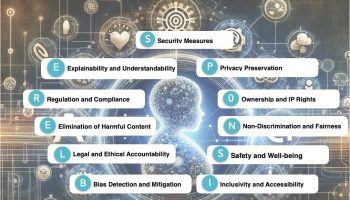Technology moves at an incredible pace, and with every advance, the challenges we face become more complex. Software architecture must adapt – not just to keep up with innovation, but to ensure the technology we build works responsibly within society. Today’s software architects and developers need to do more than build good programs; they need to build solutions that are technically sound, sustainable, and make a positive impact on the world.
Responsible Software Architecture is a design philosophy that emphasizes creating software solutions that are technically excellent while actively prioritizing ethical considerations, sustainability, and their positive impact on society. It goes beyond traditional requirements of performance and functionality to address complex challenges posed by today’s interconnected world.
Why Modern Principles Matter
We live in a world shaped by interconnected systems, where data privacy, security threats, and the environmental impact of technology are growing concerns. Traditional software design methods no longer cut it. To truly solve contemporary problems, we need an architectural approach that emphasizes responsibility alongside technical ingenuity. This means building software that’s scalable, maintainable, secure and aligns with our values around ethics and sustainability.
Ten Pillars of Modern Software Architecture
Here’s a framework to guide developers in this new era of responsible software design:
- Modularity: Building for Change. Break down large systems into smaller, independent parts (modules). This makes your software adaptable, allowing for updates and replacements without a complete overhaul.
- Simplicity: Elegance in Design. Software should be straightforward to understand and use. Simplifying systems makes them easier to maintain and less prone to errors.
- Scalability: Planning for Growth. Ensure your design can handle increased usage and data loads without needing major restructuring.
- Reusability: Code with Many Purposes. Develop components that can be used across various applications, saving time and promoting consistency.
- Maintainability: Built to Last. Design software that can be easily fixed, updated, and improved over time, reducing long-term costs.
- Sustainability: Eco-Conscious Coding. Prioritize efficient designs that minimize energy consumption and optimize resource usage.
- Cost-Effectiveness: Value over Time. Balance investment with a focus on solutions that offer long-term benefits and reduced maintenance costs.
- Ethical Design: Technology for Good. Consider fairness, privacy, and transparency in every step. This is especially crucial in areas like AI, where biased data or algorithms can have harmful consequences.
- Security: Protection as a Priority. Bake security into your architecture from the ground up. Robust practices will safeguard user data and protect against vulnerabilities.
- Responsibility: Beyond the Code. The software has a real-world impact. Build with accountability for how your software may affect individuals and society.
The Path Forward: A Call to Action
It’s not enough to just know these principles – we have to live them. Here’s how we can make responsible software architecture a reality:
- Education: Train the next generation of architects and developers in ethical, sustainable design practices. Studies show that incorporating ethics into early-stage tech education leads to more considerate decision-making throughout developers’ careers.
- Tools: Develop tools that aid in impact assessment, measuring energy efficiency, and identifying potential biases in data. For example, tools like “Code Carbon” can calculate the carbon footprint of software projects, empowering developers to make greener choices.
- Collaboration: Share best practices and create industry-wide standards for responsible architecture. Organizations like the “Green Software Foundation” are making headway, establishing benchmarks and guidelines to track the environmental impact of software.
- Investment: Governments and businesses should increase funding for research in responsible software design.
- Demand: As customers and stakeholders, demand transparency and accountability for how technology is built, driving corporations to prioritize responsible software design.
The future of software depends on how we build it today. By embracing these modern principles, we can create technology that not only pushes the boundaries of what’s possible but also serves our world in a positive, meaningful way.
A Deeper Dive
If you’re eager to explore this transformation in software design further, consider my book “Architecting the Future: Principles of Modern and Responsible Software Design.” It expands on the topics discussed here, offering in-depth guidance, strategies, and real-world case studies for implementing these concepts into your everyday practice.
You can find it on Amazon at: https://amzn.to/42zIY0L/
Let’s join forces in building a better future through responsible software architecture!
Conclusion
The principles outlined in this blog are not just an abstract ideal, but a practical toolkit for developers ready to make a difference. We owe it to ourselves, our users, and our society to build systems that are as resilient and dependable as they are conscious of their impact. The shift towards responsible software architecture isn’t about restrictions; it’s about unlocking greater innovation and creating a more sustainable, equitable future with technology as a positive force.



